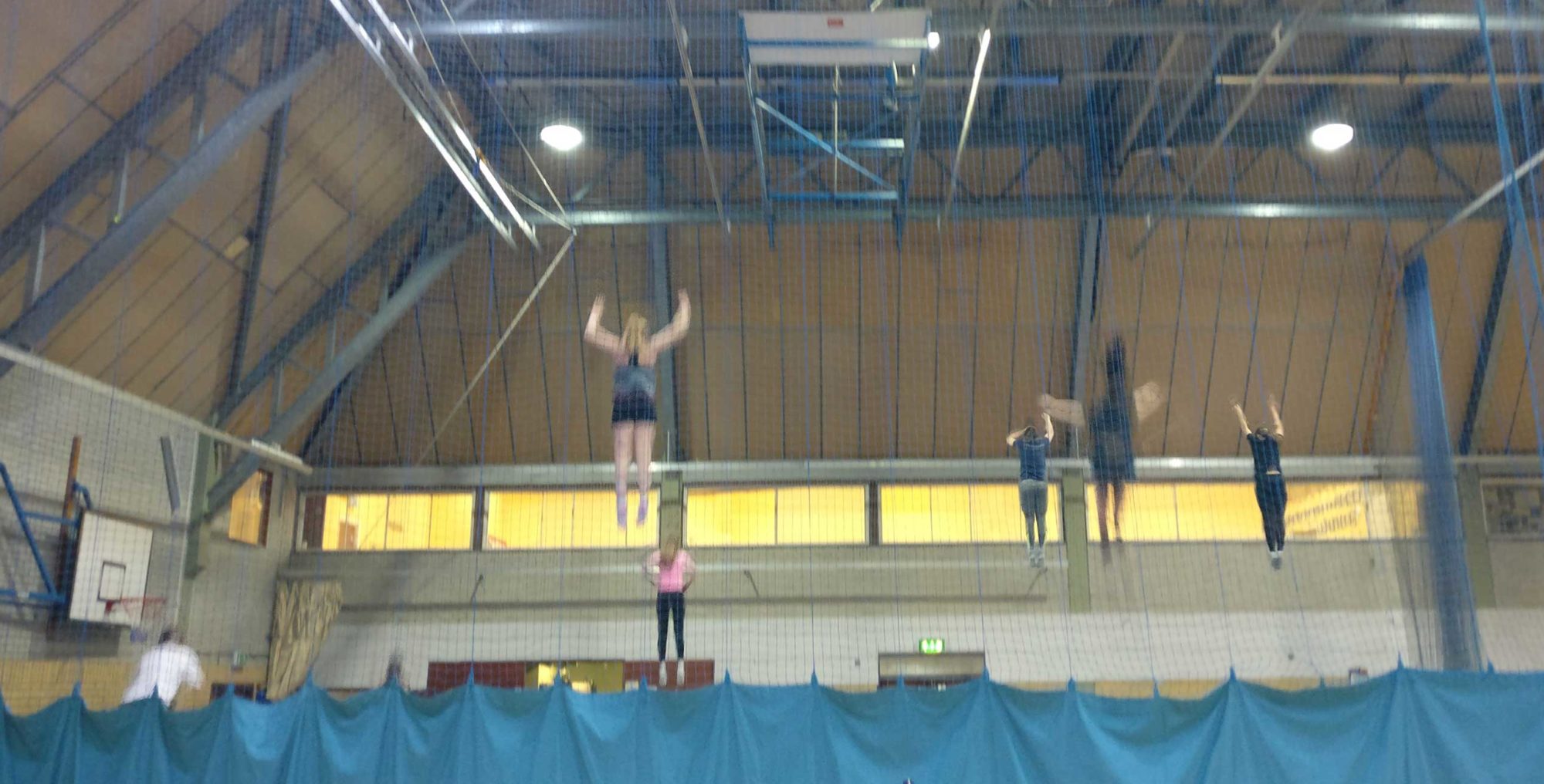Top It Up or Turn It Over
Having spent the last two articles promoting the principles of “top” and stressing the need to prioritise the vertical element in all trampoline take offs, I want to look in more detail at how this is achieved when a somersault is involved. Let us use the tucked back somersault as an example in order to establish the principles, although what follows can be translated into any skill from the elementary to the most complex
Fig 1 should act as a reminder of the chimney concept I have been promoting and establish the context for the subsequent illustrations.

Consider the merits of a take off with an unusually large vertical input which, by definition will have a lower than usual rotational component as shown in Fig 2.

The dominance of the vertical component during the take off phase will facilitate an earlier and tighter tucked shape as well as providing a longer period in the air for the relatively modest rotational element to take effect. The overall result will be spectacular “top” and the delivery of a subsequent vertical drop to the trampoline. This in turn will cause a deeper depression in the bed and create the conditions for any following skill to once again soar to the top of the chimney.
Compare this with Fig 3 and Fig 4 where there is a much greater emphasis on the rotational input during the take off phase and a correspondingly reduced vertical component.


It is my experience that these two illustrations represent the norm at all levels of British trampolining and that Fig 2 is the exception. In Figures 3 and 4 the fast rotation is being produced during the take off phase by either an excessive forward displacement of the hips as in Fig 3, or a degree of backward lean as shown in Fig 4.
The excess hip displacement and the lean both make it very difficult for the performer to create a compact tucked shape in the early flight phase thus largely nullifying the powerful rotational input. In both cases the somersault loses height relative to the initial jumping and in the case of Fig 4 there is unacceptable travel. Through trying to spin faster with the aim of achieving an impressive kick out the trampolinist has lost height and compromised the subsequent landing phase as a preparation for the next skill. That seems like a classic lose/lose situation to me, Because the performer in Fig 4 has also travelled, I make that lose/lose/lose!
Of course I understand it is an extremely challenging goal to perform any routine with ten single somersaults all of which hit the top of the chimney, never mind one with double and triple somersaults including twist. The point I am making however, is that trampolinists should be taught their basic somersaults and all elementary skills involving somersault-type rotation, with the vertical component as the priority. The aim should be to use just enough rotational force to achieve the skill without any loss of height or travel. Failure to groove this balance of inputs during the take off phase in the early years will seriously limit the trampolinist’s future ability to perform routines of world class difficulty with world class execution and form!
Too many British trampolinists are producing remarkable levels of difficulty with poor vertical components resulting in travel and height loss, thus seriously limiting their impact on the world stage. Now for a prediction! Routines of high difficulty (15.0 plus) which hit the top of the chimney on all ten skills are likely to feature in world competition during the next Olympic cycle and the signs are already there. UK coaches developing our young talented trampolinists must take heed now before we fall seriously behind.
© Jack Kelly

